An army (from Latin arma "arms, weapons" via Old French armée, "armed" (feminine)) or land force is a fighting force that fights primarily on land. In the broadest sense, it is the land-based military branch, service branch or armed service of a nation or state. It may also include aviation assets by possessing an army aviation component. In certain states, the term army refers to the entire armed forces (e.g., People's Liberation Army). Within a national military force, the word army may also mean a field army.
In several countries, the army is officially called the Land Army to differentiate it from an air force called the Air Army, notably France. In such countries, the word "army" on its own retains its connotation of a land force in common usage. The current largest army in the world, by number of active troops, is the People's Liberation Army Ground Force of China with 1,600,000 active troops and 510,000 reserve personnel followed by the Indian Army with 1,129,000 active troops and 960,000 reserve personnel.
By convention, irregular military is understood in contrast to regular armies which grew slowly from personal bodyguards or elite militia. Regular in this case refers to standardized doctrines, uniforms, organizations, etc. Regular military can also refer to full-time status (standing army), versus reserve or part-time personnel. Other distinctions may separate statutory forces (established under laws such as the National Defence Act), from de facto "non-statutory" forces such as some guerrilla and revolutionary armies. Armies may also be expeditionary (designed for overseas or international deployment) or fencible (designed for – or restricted to – homeland defence)
Contents
History
India
India has had the earliest armies in the world. During the Indus Valley Civilization (3500–1900 BCE) however, there was just a small guard force as they didn't fear invasion at the time. The first known recorded battles, the War of the Ten Kings, happened when a Hindu Aryan emperor Sudas defeated an alliance of ten kings and their supportive chieftains. During the Iron Age, the Maurya and Nanda Empires had the largest armies in the world, the peak being approximately over 600,000 Infantry, 30,000 Cavalry, 8,000 War-Chariots and 9,000 War Elephants not including tributary state allies. In the Gupta age, large armies of longbowmen were recruited to fight off invading horse archer armies. Elephants, pikemen and cavalry were other featured troops.
In Rajput times, the main piece of equipment was iron or chain-mail armour, a round shield, either a curved blade or a straight-sword, a chakra disc and a katar dagger.
China
The states of China raised armies for at least 1000 years before the Spring and Autumn Annals. By the Warring States period, the crossbow had been perfected enough to become a military secret, with bronze bolts which could pierce any armor. Thus any political power of a state rested on the armies and their organization. China underwent political consolidation of the states of Han (?), Wei (?), Chu (?), Yan (?), Zhao (?) and Qi (?), until by 221 BCE, Qin Shi Huang (????), the first emperor of the Qin dynasty, attained absolute power. This first emperor of China could command the creation of a Terracotta Army to guard his tomb in the city of Xi'an (??), as well as a realignment of the Great Wall of China to strengthen his empire against insurrection, invasion and incursion.
Sun Tzu's The Art of War remains one of China's Seven Military Classics, even though it is two thousand years old. Since no political figure could exist without an army, measures were taken to ensure only the most capable leaders could control the armies. Civil bureaucracies (???) arose to control the productive power of the states, and their military power.
Sparta
The Spartan Army was one of the earliest known professional armies. Boys were sent to a barracks at the age of seven or eight to train for becoming a soldier. At the age of thirty they were released from the barracks and allowed to marry and have a family. After that, men devoted their lives to war until their retirement at the age of 60. Unlike other civilizations, whose armies had to disband during the planting and harvest seasons, the Spartan serfs or helots, did the manual labor.
This allowed the Spartans to field a full-time army with a campaign season that lasted all year. The Spartan Army was largely composed of hoplites, equipped with arms and armor nearly identical to each other. Each hoplite bore the Spartan emblem and a scarlet uniform. The main pieces of this armor were a round shield, a spear and a helmet.
Ancient Rome
The Roman Army had its origins in the citizen army of the Republic, which was staffed by citizens serving mandatory duty for Rome. Reforms turned the army into a professional organization which was still largely filled by citizens, but these citizens served continuously for 25 years before being discharged.
The Romans were also noted for making use of auxiliary troops, non-Romans who served with the legions and filled roles that the traditional Roman military could not fill effectively, such as light skirmish troops and heavy cavalry. After their service in the army they were made citizens of Rome and then their children were citizens also. They were also given land and money to settle in Rome. In the Late Roman Empire, these auxiliary troops, along with foreign mercenaries, became the core of the Roman Army; moreover, by the time of the Late Roman Empire tribes such as the Visigoths were paid to serve as mercenaries.
Medieval Europe
In the earliest Middle Ages it was the obligation of every aristocrat to respond to the call to battle with his own equipment, archers, and infantry. This decentralized system was necessary due to the social order of the time, but could lead to motley forces with variable training, equipment and abilities. The more resources the noble had access to, the better his troops would be.
The knights were drawn to battle by feudal and social obligation, and also by the prospect of profit and advancement. Those who performed well were likely to increase their landholdings and advance in the social hierarchy.[citation needed] The prospect of significant income from pillage, and ransoming prisoners was also important. For the mounted knight war could be a relatively low risk affair.
As central governments grew in power, a return to the citizen armies of the classical period also began, as central levies of the peasantry began to be the central recruiting tool. England was one of the most centralized states in the Middle Ages, and the armies that fought in the Hundred Years' War were, predominantly, composed of paid professionals.
In theory, every Englishman had an obligation to serve for forty days. Forty days was not long enough for a campaign, especially one on the continent.[8]
Thus the scutage was introduced, whereby most Englishmen paid to escape their service and this money was used to create a permanent army. However, almost all high medieval armies in Europe were composed of a great deal of paid core troops, and there was a large mercenary market in Europe from at least the early 12th century.
As the Middle Ages progressed in Italy, Italian cities began to rely mostly on mercenaries to do their fighting rather than the militias that had dominated the early and high medieval period in this region. These would be groups of career soldiers who would be paid a set rate. Mercenaries tended to be effective soldiers, especially in combination with standing forces, but in Italy they came to dominate the armies of the city states. This made them considerably less reliable than a standing army. Mercenary-on-mercenary warfare in Italy also led to relatively bloodless campaigns which relied as much on maneuver as on battles.
In 1439 the French legislature, known as the Estates General (French: états généraux), passed laws that restricted military recruitment and training to the king alone. There was a new tax to be raised known as the taille that was to provide funding for a new Royal army. The mercenary companies were given a choice of either joining the Royal army as compagnies d'ordonnance on a permanent basis, or being hunted down and destroyed if they refused. France gained a total standing army of around 6,000 men, which was sent out to gradually eliminate the remaining mercenaries who insisted on operating on their own. The new standing army had a more disciplined and professional approach to warfare than its predecessors. The reforms of the 1440s, eventually led to the French victory at Castillon in 1453, and the conclusion of the Hundred Years' War. By 1450 the companies were divided into the field army, known as the grande ordonnance and the garrison force known as the petite ordonnance .[9]
Early modern
First nation states lacked the funds needed to maintain standing forces, so they tended to hire mercenaries to serve in their armies during wartime. Such mercenaries typically formed at the ends of periods of conflict, when men-at-arms were no longer needed by their respective governments.
The veteran soldiers thus looked for other forms of employment, often becoming mercenaries. Free Companies would often specialize in forms of combat that required longer periods of training that was not available in the form of a mobilized militia.
As late as the 1650s, most troops were mercenaries. However, after the 17th century, most states invested in better disciplined and more politically reliable permanent troops. For a time mercenaries became important as trainers and administrators, but soon these tasks were also taken by the state. The massive size of these armies required a large supporting force of administrators.
The newly centralized states were forced to set up vast organized bureaucracies to manage these armies, which some historians argue is the basis of the modern bureaucratic state. The combination of increased taxes and increased centralisation of government functions caused a series of revolts across Europe such as the Fronde in France and the English Civil War.
In many countries, the resolution of this conflict was the rise of absolute monarchy. Only in England and the Netherlands did representative government evolve as an alternative. From the late 17th century, states learned how to finance wars through long term low interest loans from national banking institutions. The first state to master this process was the Dutch Republic. This transformation in the armies of Europe had great social impact. The defense of the state now rested on the commoners, not on the aristocrats.
However, aristocrats continued to monopolise the officer corps of almost all early modern armies, including their high command. Moreover, popular revolts almost always failed unless they had the support and patronage of the noble or gentry classes. The new armies, because of their vast expense, were also dependent on taxation and the commercial classes who also began to demand a greater role in society. The great commercial powers of the Dutch and English matched much larger states in military might.
As any man could be quickly trained in the use of a musket, it became far easier to form massive armies. The inaccuracy of the weapons necessitated large groups of massed soldiers. This led to a rapid swelling of the size of armies. For the first time huge masses of the population could enter combat, rather than just the highly skilled professionals.
It has been argued that the drawing of men from across the nation into an organized corps helped breed national unity and patriotism, and during this period the modern notion of the nation state was born. However, this would only become apparent after the French Revolutionary Wars. At this time, the levée en masse and conscription would become the defining paradigm of modern warfare.
Before then, however, most national armies were in fact composed of many nationalities. In Spain armies were recruited from all the Spanish European territories including Spain, Italy, Wallonia (Walloon Guards) and Germany. The French recruited some soldiers from Germany, Switzerland as well as from Piedmont. Britain recruited Hessian and Hanovrian troops until the late 18th century. Irish Catholics made careers for themselves in the armies of many Catholic European states.
Prior to the English Civil War in England, the monarch maintained a personal Bodyguard of Yeomen of the Guard and the Honourable Corps of Gentlemen at Arms, or "gentlemen pensioners", and a few locally raised companies to garrison important places such as Berwick on Tweed or Portsmouth (or Calais
Watch movie Army online on Amazon
Up to 70% discount on Mobile and laptop for today : Buy now

Up to 80% discount on Pampers diapers other baby product : Buy now 

Stream Movie Now
Watch movie Army online
Watch The Movie On PrimeShool Full HD Movie Download

Jolly Days Full HD Movie Download

The Hero-Abhimanyu Full HD Movie Download

Thodi Si Bewafai Full HD Movie Download

Lok Parlok Full HD Movie Download
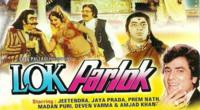
Gunahon Ka Faisla Full HD Movie Download
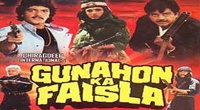
Nandini I Love You Full HD Movie Download

Bandie Full HD Movie Download
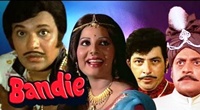
Nehiya Lagawani Saiyan Se Full HD Movie Download

Main Hoon Rakhwala Full HD Movie Download

Iddaru Pellala Muddula Police Full HD Movie Download
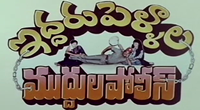
Atma Katha Full HD Movie Download

Something To Sing About Full HD Movie Download
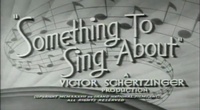
Jogwa Amba Baicha Full HD Movie Download

Mazhe Saubhagya Full HD Movie Download

Dark Water Full HD Movie Download

Dhum Full HD Movie Download

Ravi I Love You Full HD Movie Download

Neti Siddhartha Full HD Movie Download

Gudachari 116 Full HD Movie Download

Maavoori Maisamma Full HD Movie Download

Download latest Movie from bollywood
- 1> baaghi 3
- 2> THE SKY IS PINK MOVIE FULL STORY AND REVIEW
- 3> Luka Chuppi
- 4> TO ALL THE BOYS I’VE LOVED BEFORE
- 5> Kabir Singh
- 6> Street Dancer 3D
- 7> Simmba
- 8> Gone Girl
- 9> The Girl Who Lived
- 10> Ludo
- 11> DILWALE DULHANIA LE JAYENGE
- 12> GUILTY
- 13> The Godfather
- 14> Adventures of Rusty
- 15> Sooryavanshi
- 16> Satyameva Jayate 2
- 17> Thappad
- 18> Bhool Bhulaiyaa 2
- 19> KGFChapter 2
- 20> Mardaani 2
- 21> Pinjar
- 22> Shivaji maharaj
- 23> Ek Villian 2
- 24> Hungama 2
- 25> Divergent
- 26> Mumbai Saga
- 27> The Internship
- 28> HIT (telugu)
- 29> Panga
- 30> The perfect date
- 31> 16 December
- 32> Gopala Gopala (Telugu)
- 33> Brahmastra
- 34> Gangubai Kathiawadi
- 35> Manmadhudu
- 36> Nenu local
- 37> Mahanati
- 38> Shatamanam bavathi
- 39> Lagaan
- 40> After
- 41> MOM
- 42> Shamshera
- 43> Raguvaran BTech
- 44> Khakee
- 45> The villain
- 46> OM
- 47> Mr. perfect
- 48> Bueatifull mind
- 49> Hichki
- 50> Gabbar Singh
- 51> Jogi
- 52> Before Sunrise
- 53> Before Sunset
- 54> Before Midnight
- 55> The Big Bull
- 56> Top Gun: Maverick
- 57> The Purge
- 58> The Sky is Pink
- 59> Laxmmi Bomb
- 60> Sadak 2
- 61> Sufna
- 62> Prithviraj
- 63> PK
- 64> Coolie No 1(2020)
- 65> Black Widow
- 66> Dear Zindagi
- 67> Dil Bechara
- 68> PHIR HERA PHERI
- 69> WAR
- 70> Dostana
- 71> RRR: Roudram Ranam Rudhiram
- 72> Maidan
- 73> Dabbang 3
- 74> Chhalaang
- 75> life as we know it
- 76> SherShaah
- 77> Sandeep Aur Pinky Faraar
- 78> Event Horizon
- 79> 83
- 80> Radhe: Your Most Wanted Bhai
- 81> Gunjan Saxena: The Kargil Girl
- 82> Mr India
- 83> Vivah
- 84> Anokha Bandhan
- 85> Ghost
- 86> Bhoot: Part One - The Haunted Ship
- 87> Haseen Dilruba
- 88> Laal Singh Chaddha
- 89> Qismat
- 90> Rajput
- 91> Drive
- 92> Dil Chahta Hai
- 93> Dil Ki Baazi
- 94> Dil Ka Rishta
- 95> Teesri Manzil
- 96> Dil
- 97> Love Aaj Kal
- 98> Khaali Peeli
- 99> Bunty Aur Babli 2
- 100> Atrangi Re
- 101> Gulabo Sitabo
- 102> Jodi
- 103> Suraj Pe Mangal Bhari
- 104> Deewana
- 105> Attack
- 106> Sardar Udham Singh
- 107> Toofan
- 108> THE LOVEBIRDS
- 109> Jersey
- 110> Ginny Weds Sunny
- 111> Thalaivi
- 112> Shiddat
- 113> Angels vs Zombies
- 114> Koi Mil Gya
- 115> Thank God
- 116> Bhuj: The Pride of India
- 117> Hum Aapke Hain Kaun
- 118> The Platform
- 119> Bird Box
- 120> Roohi Afzana
- 121> Torbaaz
- 122> Nikamma
- 123> World War Z
- 124> Extraction
- 125> Train to Busan
- 126> Life of Pi
- 127> SHAADI MEIN JROOR AANA
- 128> Himmat Aur Mehnat
- 129> To All The Boys: P.S. I Still Love You
- 130> Mimi
- 131> Good Newwz
- 132> Shubh Mangal Zyada Saavdhan
- 133> Raabta
- 134> Harry Potter and the Philosopher's Stone
- 135> Harry Potter and the Chamber of Secrets
- 136> Chhapaak
- 137> War of the Worlds
- 138> Harry Potter and the Prisoner of Azkaban
- 139> Harry Potter and the Goblet of Fire
- 140> MURDER MYSTERY
- 141> Shakuntala Devi
- 142> Bachchan Pandey
- 143> Jayeshbhai Jordar
- 144> Sheer Qorma
- 145> Saina
- 146> 'O' Pushpa I hate tears
- 147> Kedarnath
- 148> MS Dhoni The Untold Story
- 149> Chhichhore
- 150> Badhaai Ho
- 151> Unstoppable
- 152> Oz the Great And Powerful
- 153> The Girl on the Train
- 154> Haathi Mere Saathi 2020
- 155> The Conjuring: The Devil Made Me Do It
- 156> Gandhi Se Pehle Gandhi
- 157> The Song of Scorpions
- 158> Srimanthudu
- 159> Hello Guru Prema Kosame
- 160> Beauty and The Beast
- 161> Black Panther
- 162> Charlie and the Chocolate Factory
- 163> Bole Chudiyan
- 164> Fidaa
- 165> Duvvada Jagannadham
- 166> Bruce Lee: The Fighter
- 167> Hyper
- 168> Yaara
- 169> Red (2020)
- 170> Shivam
- 171> That Is Mahalakshmi
- 172> Nishabdham
- 173> Aashram 2020 web series
- 174> Laxmii
- 175> Mismatched
- 176> STUDENT OF THE YEAR 2
- 177> NAIL POLISH
- 178> Ramprasad Ki Tehrvi
- 179> KAAGAZ
- 180> 12 o Clock
- 181> The Power
- 182> bolo hau
- 183> Tribhanga
- 184> JAMUN
- 185> Madam Chief Minister
- 186> Maasaab
- 187> Aadhaar
- 188> Tanhaji
- 189> Bhaagi 3
- 190> Bhootnath
- 191> MALANG
- 192> Jai Mummy Di
- 193> Haathi Mere Saathi 2021
- 194> Shakeela
- 195> Unpaused
- 196> Annayya
- 197> Vamsoddharakudu
- 198> Mrugaraju
- 199> Narasimha Naidu
- 200> Sankranti
- 201> Manasu Maata Vinadhu
- 202> Anjaane
- 203> Apaharan
- 204> Bachke Rehna Re Baba
- 205> Bewafaa
- 206> Roohi
- 207> Radhe
- 208> Zindagi Khoobsoorat Hai
- 209> Yeh Mohabbat Hai
- 210> Yeh Kya Ho Raha Hai?
- 211> The Tomorrow War
- 212> DehradunDiary
- 213> Meri Shaadi Karaoo
- 214> Matruu Ki Bijlee Ka Mandola
- 215> No One Killed Jesica
- 216> Aag Ka Goola
- 217> Eight Million Dollars
- 218> Three Hundred
- 219> Cats and Dog
- 220> Decoy
- 221> Gold Rush
- 222> You Have Got Mail
- 223> Final Destination three
- 224> Tofan
- 225> Jungle


